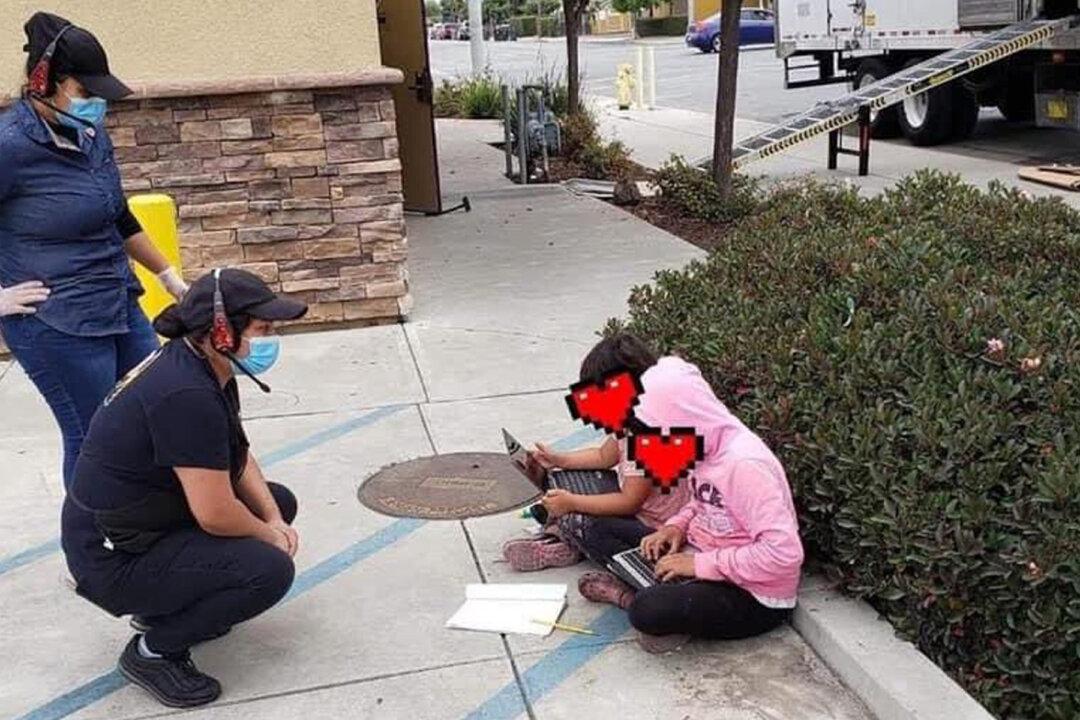A photograph from California exemplifying the “digital divide” as millions of school students head back into the virtual classroom has been going viral.
Two little girls were pictured sitting cross-legged on the sidewalk outside a Salinas Valley Taco Bell, accessing the eatery’s free WiFi to do their school work. The photo has reignited a debate about access to technology.





